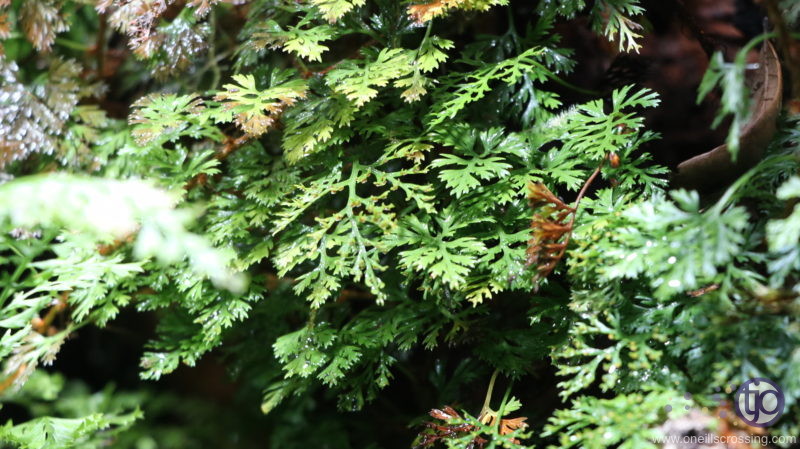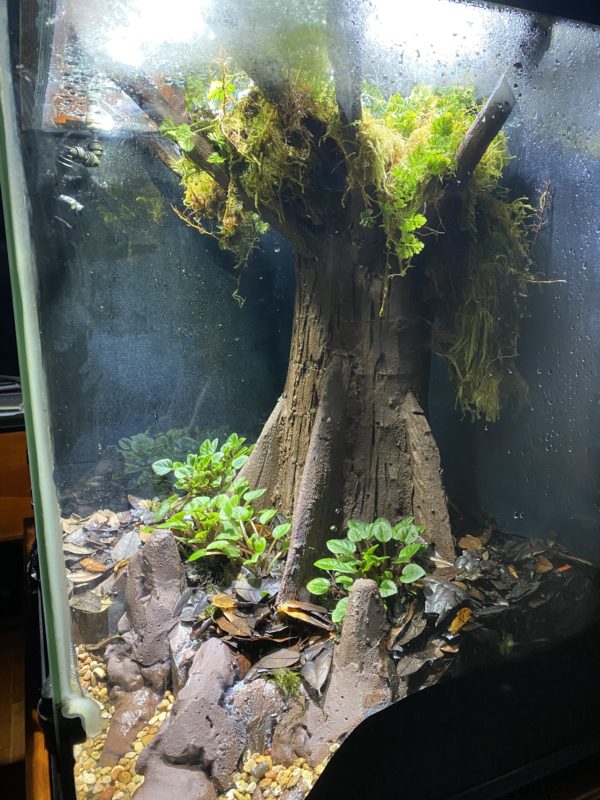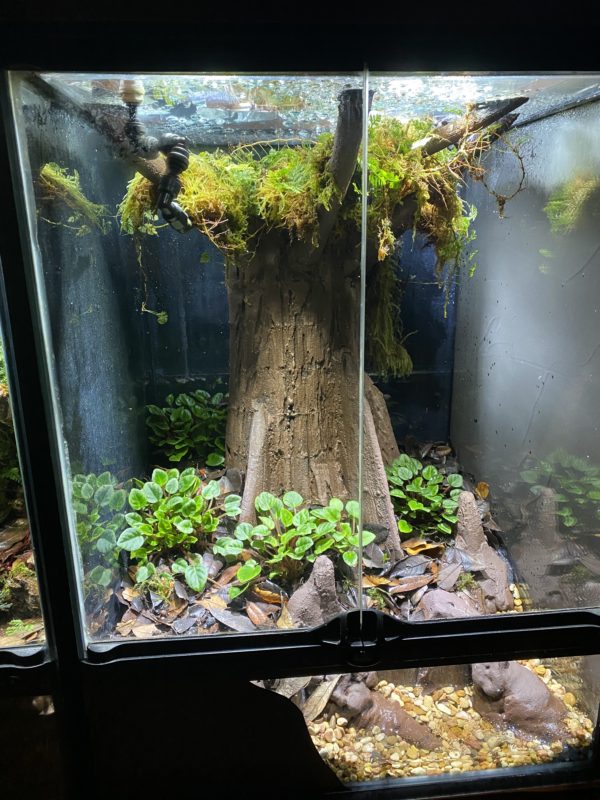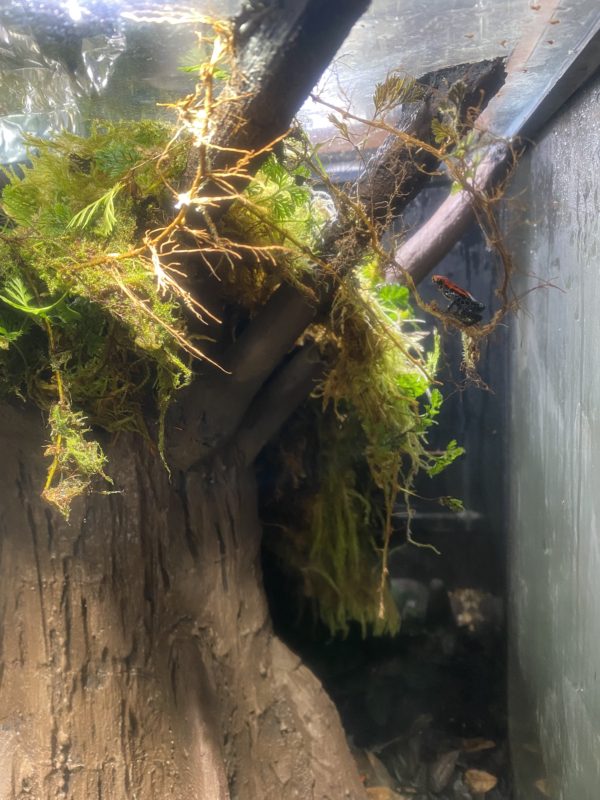Davallia parvula is a wonderful litte epiphytic fern that is a versatile addition to naturalistic vivariums. In my experience Davallia parvula is relatively slow growing, and it can be picky in terms of its lighting and humidity preferences. I have found that it seems to do better for me in relatively high humidity conditions while it does not thrive under direct misting.
My abridged care recommendations:
- higher intensity lighting
- high humidity
- indirect misting
- vertical growing surfaces
- natural growing surfaces like corkbark
My first experience with Davallia parvula
I’ve had great success with my initial Davallia parvula purchase from 2015. This initial clipping purchased from a keeper off Dendroboard was used in a cork round vivarium, where my goal was to provide it with a vertical growing surface for this epiphytic plant. Over the course of 6 years this cork round “simulated tree” provided an optimal growing platform for Davallia parvula, and I ended up with a fully covered 8″ diameter cork round that was about 20 inches tall:
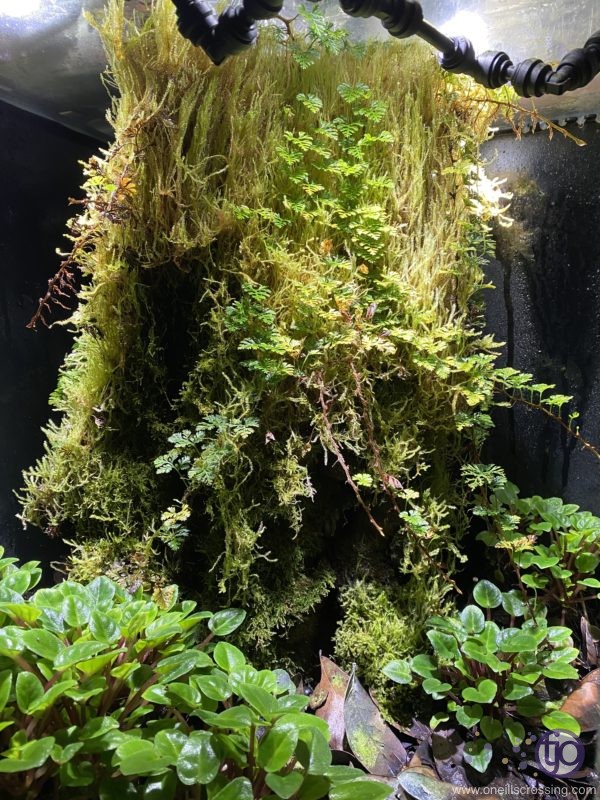
Unfortunately this round degraded and separated from the top of the viv, creating a hazard for the animals I was housing. The cork bark round also began to degrade, making it difficult to move to another viv in this particular orientation. I wanted to keep the vertical, tree-like look, so I decided to breakdown this viv and create new build with a more permanent platform for Davallia parvula to grow on, optimized for its epiphytic growth, while providing a visually appealing scaffold.
Building a vivarium showcasing Davallia parvula
After my initial experience with Davallia parvula I decided to rebuild the failed cork round based simulated tree build with a new foam simulated bald cypress build. That link provides you with a full view of my build of a foam simulated tree that I thought would make a great platform for showcasing the cascading fronds from Davallia parvula while making it look like a scaled down tree. I do leverage clippings of Davallia parvula in other vivariums, but this epiphytic fern does seem to do best in larger vivariums with a variety of humidity, misting, and lighting options available where it can find its optimal growing location. Typically I struggle more getting these parameters correct in smaller 10″x10″x16″ vivariums.
Close up photos of Davallia parvula
I’m not a botanist, so take my descriptions with a grain of salt, from the perspective of a vivarium enthusiast that is learning, and really appreciates this plant. My descriptions here are based strictly on my experience.
The typical growth patterns I have observed with Davallia parvula is that it starts by growing long stringlike rhizomes that look like a moss. These closely coat surfaces, including glass, as the plant spreads. I have found that it does best on cork bark (though I am trying drylock coated foam now). After a thick coat of these fine rhizomes build up, fronds will develop. Here is a photo of the carpet like rhizomes.

Fronds are delicate and relatively small, typically 1 inch (2.5 cm) in total height, and 1/2 inch (1 cm) in diameter. They grow along long cascading rhizomes.

Here is another image of fronds growing vertically:

Happy inhabitants
In the end, a successful vivarium build includes plants and animals. In this case, I built a showcase vivarium for Davallia parvula, and a species of thumbnail dart frogs that are one of my favorites, Ranitomeya reticulata. Both the plants and animals took to the vivarium, as seen by this retic perched on a frond:

Davallia parvula photos
Enjoy a gallery of sampled photos from Davallia parvula within my vivariums:


